
McCreary County is a county located in the U.S. state of Kentucky. As of the 2020 census, the population was 16,888. Its county seat is Whitley City. The county is named for James B. McCreary, a Confederate war soldier and two-time Governor of Kentucky. During his second term as governor, McCreary County was created by the Legislature and was named in his honor.

Harrisburg is a city in and the county seat of Saline County, Illinois, United States. It is located about 55 miles southwest of Evansville, Indiana, and 111 mi (179 km) southeast of St. Louis, Missouri. Its 2020 population was 8,219, and the surrounding Harrisburg Township had a population of 10,037, including the city residents. Harrisburg is included in the Illinois–Indiana–Kentucky tri-state area and is the principal city in the Harrisburg micropolitan statistical area with a combined population of 24,913.

Stearns is an unincorporated community and census-designated place (CDP) in McCreary County, Kentucky, United States. The population was 1,365 at the 2020 census. It was founded by Justus Smith Stearns.
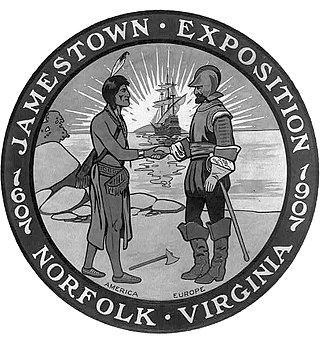
The Jamestown Exposition, also known as the Jamestown Ter-Centennial Exposition of 1907, was one of the many world's fairs and expositions that were popular in the United States in the early part of the 20th century. Commemorating the 300th anniversary of the founding of Jamestown in the Virginia Colony, it was held from April 26 to December 1, 1907, at Sewell's Point on Hampton Roads, in Norfolk, Virginia. It celebrated the first permanent English settlement in the present United States. In 1975, the 20 remaining exposition buildings were included on the National Register of Historic Places as a national historic district.
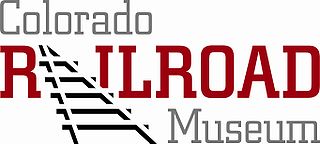
The Colorado Railroad Museum is a non-profit railroad museum. The museum is located on 15 acres (6.1 ha) at a point where Clear Creek flows between North and South Table Mountains in Golden, Colorado.
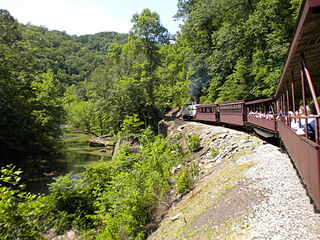
The Big South Fork Scenic Railway is a heritage railroad in Stearns, Kentucky.
Robert Elledy Gable was an American businessman from Frankfort, who was the Kentucky Republican gubernatorial nominee in 1975. Gable lost to the incumbent Democratic governor Julian Carroll. Carroll received 470,159 votes to Gable's 277,998.
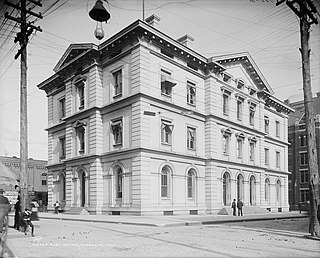
The Old Customs House, also called the Old Post Office, is a historic building located at the corner of Clinch Avenue and Market Street in Knoxville, Tennessee, United States. Completed in 1874, it was the city's first federal building. It housed the federal courts, excise offices and post office until 1933. From 1936 to 1976, it was used by the Tennessee Valley Authority for offices. Expanded in 2004, the building is home to the East Tennessee History Center, which includes the Lawson McGhee Library's Calvin M. McClung Historical Collection, the Knox County Archives, and the East Tennessee Historical Society's headquarters and museum. The building is listed on the National Register of Historic Places for its architectural significance.

The Historic Railpark and Train Museum, formerly the Louisville and Nashville Railroad Station in Bowling Green, Kentucky, is located in the historic railroad station. The building was placed on the National Register of Historic Places on December 18, 1979. Opened in 1925, the standing depot is the third Louisville & Nashville Railroad depot that served Bowling Green.

The Southern Railway Spencer Shops are a former locomotive repair facility in Spencer, North Carolina. The shops were one of the Southern Railway's primary maintenance facilities. The shops were built in the 1890s and named after Southern Railway president Samuel Spencer. Following dieselization, the need for the Spencer Shops diminished, and the facilities were decommissioned in the 1970s. The Spencer Shops and associated land were donated by the Southern Railway to the state of North Carolina, which established the North Carolina Transportation Museum on the site.
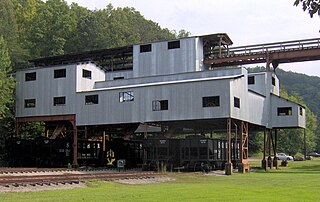
Blue Heron, also known as Mine 18, is a former coal mining community or coal town on the banks of the Big South Fork of the Cumberland River in McCreary County, Kentucky, United States, that has been recreated and is maintained as an interpretive history area in the Big South Fork National River and Recreation Area.

The L. Ron Hubbard House is a writer's house museum located at 1812 19th Street NW in the Dupont Circle neighborhood of Washington, D.C., USA. Public tours are given on a regular basis. After L. Ron Hubbard established Scientology in the 1950s the building housed offices of the Founding Church of Scientology and it is where he performed the first Scientology wedding. Hubbard's personal office was located in the building from 1956 to 1961. The Founding Church is now located at 1424 16th Street NW.

Kentucky Route 92 (KY 92) is a 112.485-mile-long (181.027 km) state highway Kentucky. The route is split into two segments by Lake Cumberland and is one of a few state routes in Kentucky with two discontinuous segments on both sides of a body of water. The western segment, which is 17.221-mile-long (27.715 km), runs from Kentucky Route 55 west of Joppa to a dead end on Lake Cumberland south of Jamestown via Joppa, Montpelier, Esto, and Jamestown. The eastern segment, which is 95.264-mile-long (153.313 km), runs from a boat ramp on Lake Cumberland northwest of Monticello to U.S. Route 25E west of Fourmile via Monticello, Barrier, Stearns, Carpenter, Timsley, and Ingram.

Tombstone Junction was a small, Western-town-themed park located on Kentucky Route 90 in McCreary County, Kentucky near the Cumberland Falls State Resort Park. It began operating in the 1960s and continued uninterrupted until it was heavily damaged by fire in 1989. The park continued with limited operation until it was completely destroyed by a second fire in 1991. The venue featured a recreation of a small, Western frontier town complete with train station, working saloon, dance hall, jailhouse, shanties, and shops. There was also an outdoor amphitheater that hosted live shows featuring country and western music of the period.

The Kentucky Coal Museum is a heritage center located in Benham, Kentucky. Its focus is the history of the coal industry in Eastern Kentucky, featuring specific exhibits on the company towns of Benham and neighboring Lynch. It is housed in a former company store that was built by International Harvester in 1923. In June 1990, the Tri-City Chamber of Commerce purchased the building for the future site of the museum. After receiving additional grants from the state of Kentucky, the museum opened in May 1994.
Barthell is a former coal town in McCreary County, Kentucky, United States. It was established in 1902 and was the first of 18 mining camps to be built by the Stearns Coal and Lumber Company. It now serves as an open-air history museum, which is open from April through Thanksgiving.
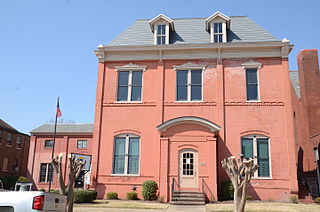
The Helena Library and Museum is a historic building at 623 Pecan Street in Helena, Arkansas. Originally constructed in 1889 by the Women's Library Association to house a library for the city of Helena, it has also housed the county library, regional library and the county's museum.

The Stearns Administrative and Commercial District, located on Old U.S. Route 27 in Stearns, Kentucky, is a 4.3 acres (1.7 ha) historic district which was listed on the National Register of Historic Places in 1988. It included six contributing buildings and one non-contributing building.
The Dunlow Norfolk & Western Railway Depot is a historic railroad depot in the small community of Dunlow, West Virginia, located along the former route of the Norfolk and Western Railway's Ohio Extension line.























